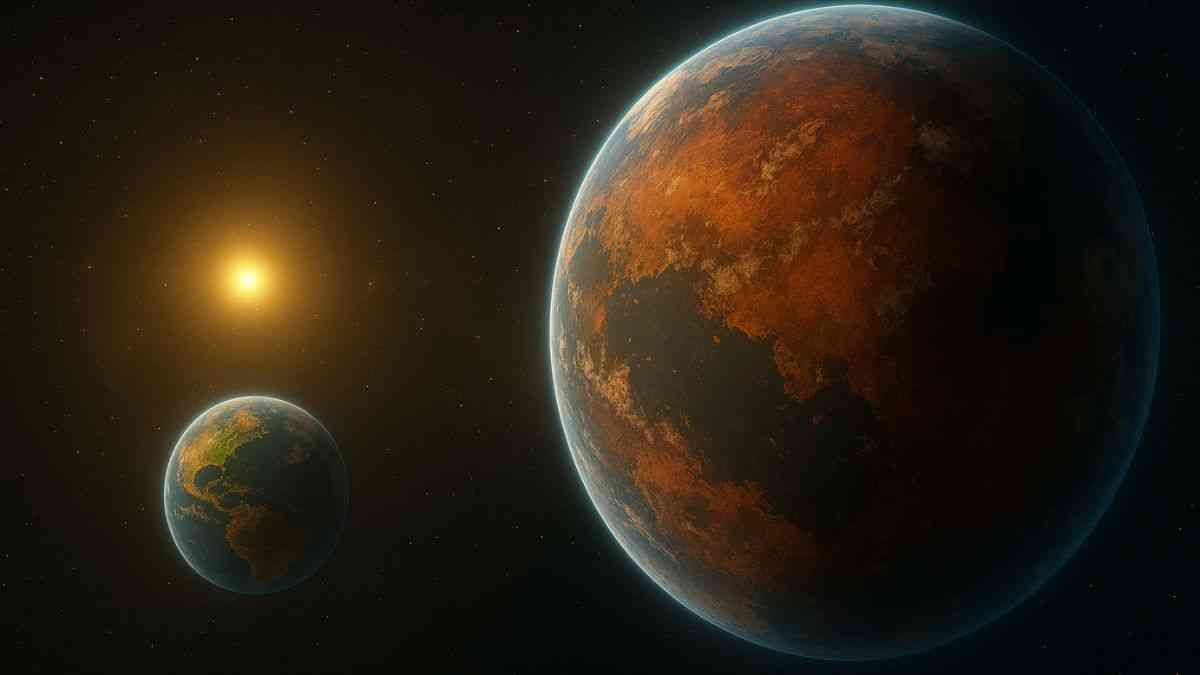Science
Ten Minutes is Enough: How AI is Changing People’s Minds
07 January 2026

Scientists using the James Webb Space Telescope have discovered something remarkable. Just 41 light-years away there is a planet that may be similar to Earth — an earth-like planet. How close are we to finding life in space?
For life to exist on a planet in the form we know, liquid water is needed. The right conditions for it prevail in the so-called habitable zone — the region around a star where the temperature is neither too low nor too high. The right distance from the star, however, is not everything. To keep water from evaporating into space, a planet also needs an atmosphere with a sufficient greenhouse effect. For years, scientists have been looking for a planet similar to Earth that would meet these conditions.
In 2016 the TRAPPIST-1 system was discovered, consisting of seven rocky planets orbiting a red dwarf. Three of them (TRAPPIST-1d, TRAPPIST-1e, and TRAPPIST-1f) lie within the system’s habitable zone. Since 2022 JWST has been systematically studying these worlds in search of signs of an atmosphere. The latest analysis of the telescope’s measurements, published in Astrophysical Journal Letters, suggests that one of these planets may indeed have one.
A team of scientists trained JWST on TRAPPIST-1e, a planet located at the center of the habitable zone. Although the data were initially contaminated by the star’s own activity, after a year of painstaking analysis the researchers managed to isolate the signal coming from the planet. It is worth emphasizing that the entire TRAPPIST-1 system is only 41 light-years from Earth. On the cosmic scale, that is very close.
What are the results? The analysis of the planet’s emitted and reflected light indicates that the world possesses a so-called secondary atmosphere containing heavy molecules (for example methane or nitrogen). So far astronomers have carried out four observations of TRAPPIST-1e. They stress that this is not enough to prove the planet’s atmospheric composition beyond all doubt. The data to date, however, clearly suggest that it could be hospitable to life.
Worth reading: Mars discovery: InSight reveals a game-changing secret
If TRAPPIST-1e really has an atmosphere, it would be the first such discovery in history! A thick atmosphere could allow liquid water to exist on its surface. To confirm this, scientists must measure the concentrations of greenhouse gases such as carbon dioxide and methane. Observations with JWST are ongoing and will allow a definitive answer as to whether TRAPPIST-1e is truly a “second Earth.” Further analyses from astronomers should appear over the next 2 years.
Just 41 light-years from us there may be a world that meets the basic conditions for life to arise. Upcoming data could prove groundbreaking. Scientists still do not rule out, however, that TRAPPIST-1e may be another dead rock like the millions found across the cosmos. Are we separated from discovering life beyond Earth by only a few years — and by the confirmation that this nearby world is indeed an earth-like planet?
Read the original article: Odkryli niezwykłą planetę. Jest łudząco podobna do Ziemi

Science
06 January 2026


Zmień tryb na ciemny